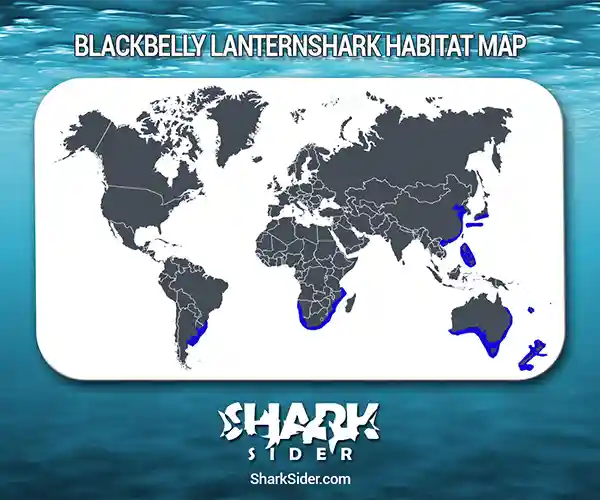The blackbelly lanternshark is a deepwater species belonging to the genus Etmopterus.
Also known as lucifer shark, lucifer dogfish, or luminous shark, they are a part of the Etmopteridae familyand live in temperate environments in the Pacific and South Atlantic Oceans.
Blackberry Lanternshark Scientific Classification |
|
| Kingdom | Animalia |
| Phylum | Chordata |
| Class | Chondrichthyes |
| Order | Squaliformes |
| Family | Etmopteridae |
| Genus | Etmopterus |
| Scientific Name | Etmopterus lucifer |
Description
These are small-sized, slender-bodied sharks, with males 11.4 inches long and females measuring around 13.2 inches. The largest recorded specimen of this shark is not more than 16.8 inches.
Their uppersides appear dark gray or brown, while the undersides are black. They even have a luminous belly and light-colored fins, perhaps an excellent mechanism for attracting prey.
They have large eyes on their head located behind their nostrils and a little adjacent to the tip of their snout.
The teeth structure and shape in the upper jaws and lower jaws differ from one another. While the upper rows of teeth appear sharp, straight, and slender, the lower ones have a blade-like shape.
They have a broad and sturdy body covered with rows of dermal denticles spread across, from the snout’s apex to their long tail.
Where do they live
Map Of The Blackbelly Lanternshark’s Habitat

The geographical distribution of these sharks ranges from the western Pacific Ocean near Japan, the South China Sea, New Caledonia, Australia, and New Zealand. Their numbers are also found in the central and southeast Pacific and the south Atlantic Oceans.
These deepwater sharks are found worldwide in tropical waters on the insular shelves, outer continental, upper slopes or near the ocean bottom at depths of 492-4100 feet.
Behavior
Dietary
The general diet of this lanternshark is cephalopods, small bony fishes, and crustaceans like shrimps and squids.
Reproductory
Blackbelly lanternsharks follow an ovoviviparous mode of sexual reproduction where live young pups hatch inside the mother from eggs and develop there until birth. Newly born individuals measure 5.9 inches long at the time of birth. Females reach sexual maturity at 13.8 inches, while males mature at 11.4 inches.
Adaptations
Because of the photophores present in these shark’s body, they exhibit bioluminescence. This may help them to find food, attract the opposite gender or help them camouflage.
Interactions with humans
As these sharks are available in significant numbers and are not of commercial importance, the New Zealand Department of Conservation has classified them as ‘Not Threatened’ in June 2018. Under the New Zealand Threat Classification System, the species was termed with qualifiers like “Data Poor” and “Secure Overseas.”
The International Union for Conservation of Nature (IUCN) currently lists this shark as a ‘Least Concern’ species. No conservation methods or practices are currently active to protect and preserve the species.
